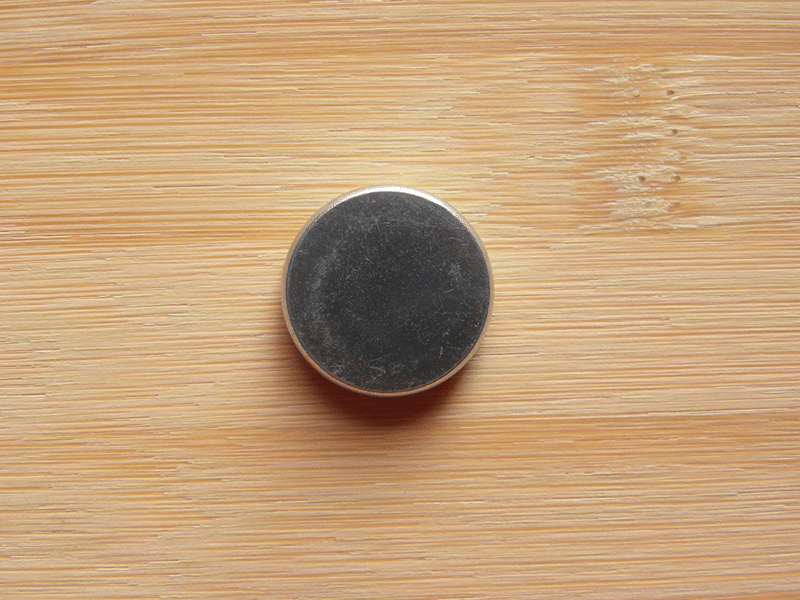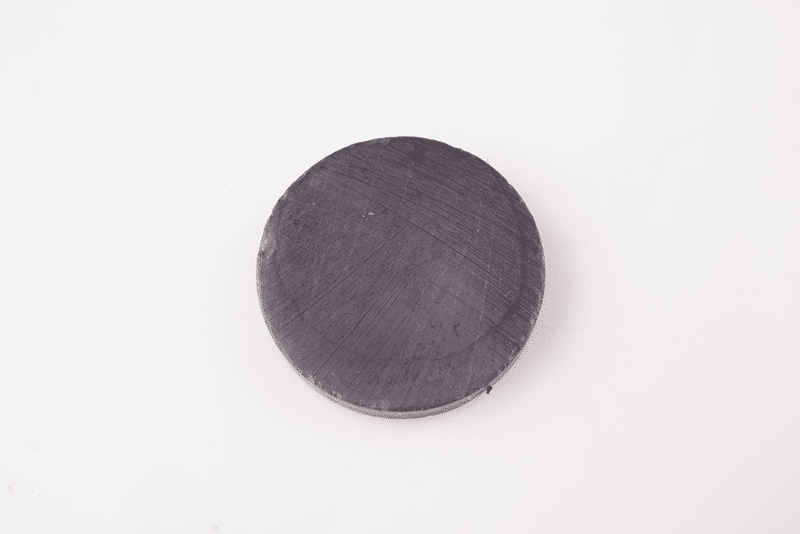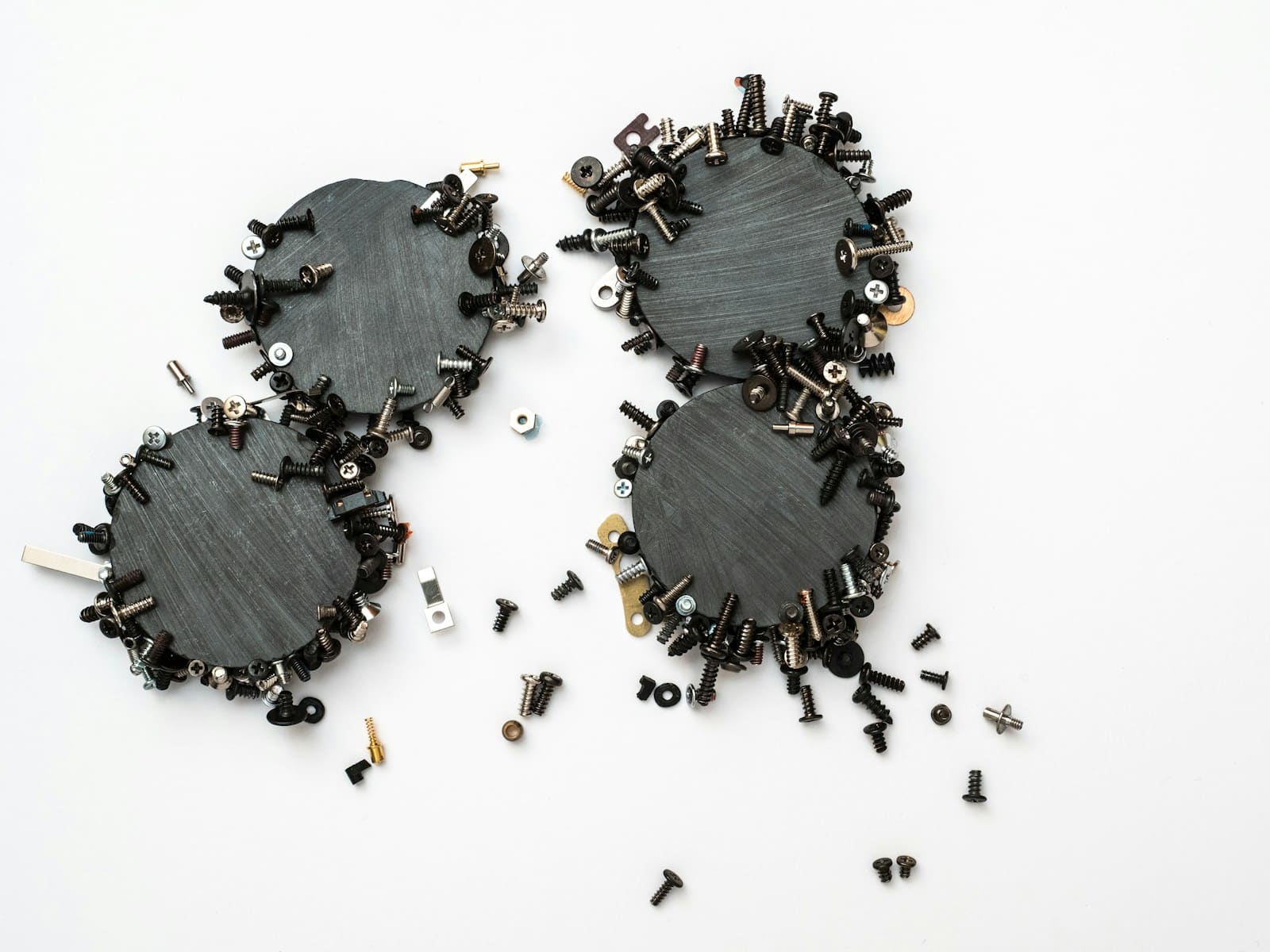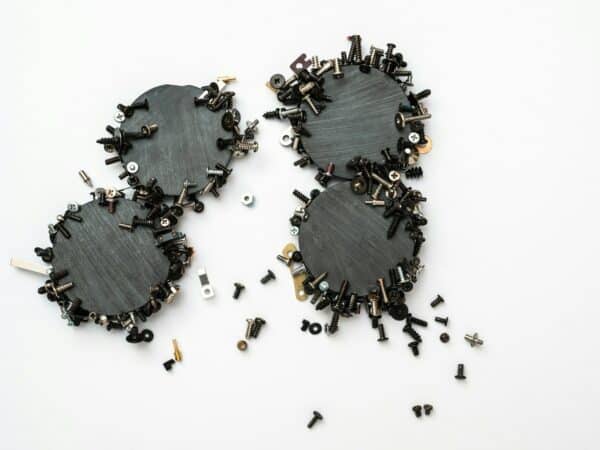Click to Skip Ahead
Some dogs will chew on and eat anything. The most notorious are puppies, who, like children, are curious and want to put everything they come across in their mouths. Other times, dogs will chew and eat foreign materials out of boredom, stress, or simply because something may be interesting and tasty. One of these foreign items that your dog may ingest is magnets. When you say magnet, most people think about the small decorative ones you have stuck to your refrigerator.
However, some magnets can be hidden in children’s toys and games or are used in a workshop, garage, or other work area. The latter tend to be stronger magnets that can cause problems if eaten by your dog. While one magnet may not cause a severe problem, if your dog ingests multiple strong magnets, they should be seen for immediate veterinary care. The magnet can cause an obstruction or internal damage in your dog, which can become worse if multiple strong magnets are ingested.
Why Is Eating Magnets Dangerous?
Eating one magnet isn’t likely to cause severe damage to your dog. At worst, depending on the size and shape of the magnet, it could cause an obstruction in your dog’s esophagus, stomach, or intestines, which can prevent your dog from eating and/or passing urine and feces. So, your dog still needs to be seen by a veterinarian because an obstruction can cause more severe problems down the line.
Your vet will need to take X-rays to determine where the magnet is in your dog’s system and decide what the best course of action is.

What If My Dog Ate Multiple Magnets?
Some magnets are more powerful, especially those in toys, a workshop, or a garage. If not treated in a timely manner, the damage could be catastrophic.
As is their nature, two or more strong magnets will be attracted to one another. The problem comes with where this attraction may occur. For instance, if you have two magnets in the stomach that stick together, you may still be able to make your dog vomit safely and expel both magnets. However, what if a portion of the stomach lining or a piece of the esophagus became stuck between those magnets? Then, when your dog attempts to vomit, the tissue is dragged with the magnets.
Another scenario is if your dog eats more than one magnet, and they pass through the GI tract at different rates. Your dog may have a magnet in their stomach, a few in their small intestines, and others in their colon. As those magnets journey through the GI tract, they will still be attracted to and want to stick to the other magnet pieces. Your dog may get a portion of their colon pulled up to a portion of the stomach. Strong magnets can still attract and stick together through the walls of the esophagus, stomach, and both large and small intestines.

What to Do If You See Your Dog Eat a Magnet
If you witness your dog eating a magnet, or you come home and find something chewed up that contains a magnet, you should immediately call your closest emergency veterinarian. If your dog ingested the magnet within a short time frame from when you found them, your veterinarian may be able to induce vomiting and avert a crisis.
You should still seek veterinary care if you are unsure when your dog ingested the magnet. The good thing about magnets is that they will show up on radiographs! Your veterinarian should be able to take a few radiographs and determine if your dog did in fact ingest the magnet(s), and then determine if it’s still in the stomach or if it’s already passed into the intestines.
It’s not recommended to try to induce vomiting in your dog at home. Some people may try to give their dogs hydrogen peroxide to make them vomit. However, this has now been shown to damage the lining of the esophagus and the stomach. In addition, depending on what the magnet was made of, the peroxide may react with the ingested magnet. Your veterinarian should be able to give a safe injection to induce vomiting.


What Are My Treatment Options?
If your dog ingested a single magnet, and it’s within the stomach, your veterinarian can try to induce vomiting. The hope is that they will vomit up the magnet with no side effects. This can even be tried if your dog ingested a few magnets that are still in the stomach. However, there are risks if your dog ingests more than one magnet.
Another option would be to have the magnet removed by endoscopy. Your dog is anesthetized, and a small camera is passed through your dog’s mouth, down their esophagus, and into their stomach. Once there, specialized instruments can retrieve the swallowed magnet.
Surgery is another option to remove the magnet. Not all veterinary clinics have endoscopy, and it may be easier to take your dog to surgery to remove them. This is typically a straightforward surgery if the magnet is still in the stomach.
If your dog is medium to large or the magnet they ingested is relatively small or chewed into small pieces, they may be able to pass it naturally. Often, your veterinarian will have you feed a high-fiber food for a few days and check their stool to make sure that the magnet comes out the other end. Radiographs can be taken to monitor the passage through the GI tract to ensure it has passed.
In cases where multiple magnets have been swallowed, the recommendation would be to pursue endoscopy or surgery as soon as possible. Monitoring for passage through the intestinal tract is not recommended due to the potentially catastrophic side effects that can occur. Once stuck together, the GI tract tissue between the magnets will necrose or die due to the pressure. This will eventually lead to your dog becoming septic and potentially passing from this condition.

Are Magnets Toxic?
Most magnets are not made from toxic materials. However, it is impossible to know with certainty what type of paint, plastic, or other chemicals may be used on the rest of the toy or material the magnet is adhered to. In general, the risk with magnet ingestion is not so much toxicity as causing severe obstruction and potentially damaging portions of the gastrointestinal tract.
Conclusion
Ingestion of a single, small magnet may not cause a problem, especially if your dog is on the larger side. However, if your dog is small or ingested multiple magnets, an evaluation and treatment by a veterinarian are recommended. Magnets should easily show up on a radiograph, allowing your veterinarian to know where in the GI tract it is. They can then make recommendations based on those results. Inducing vomiting may be an option. Other times, endoscopy or surgery may be needed.
If your dog ingested multiple magnets, it’s never recommended to take a “wait and see” approach. The magnets can adhere to one another while passing through the GI tract, causing obstruction and tissue necrosis. This can, unfortunately, lead to the death of your dog. Always seek veterinary care as soon as possible if your dog ingested a magnet.
Featured Image Credit: Dan Cristian Pădureț, Unsplash











